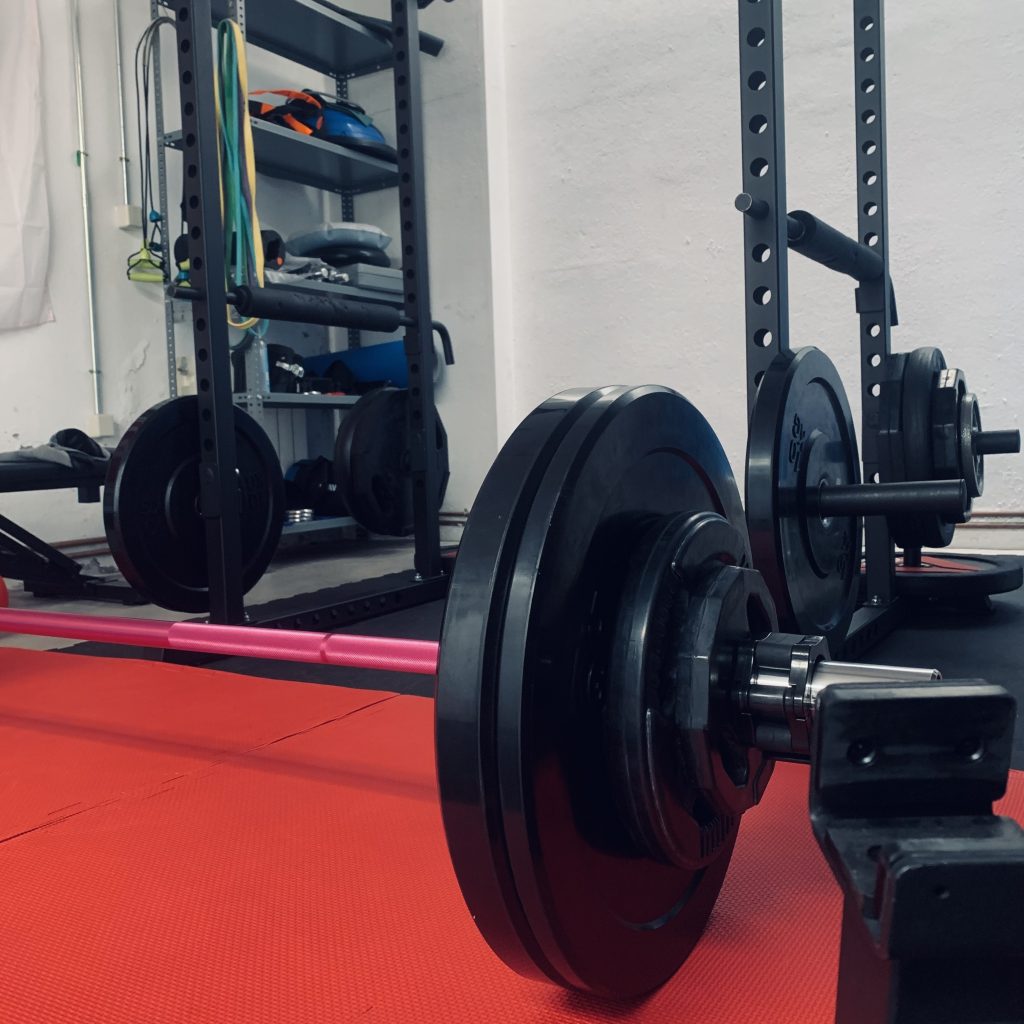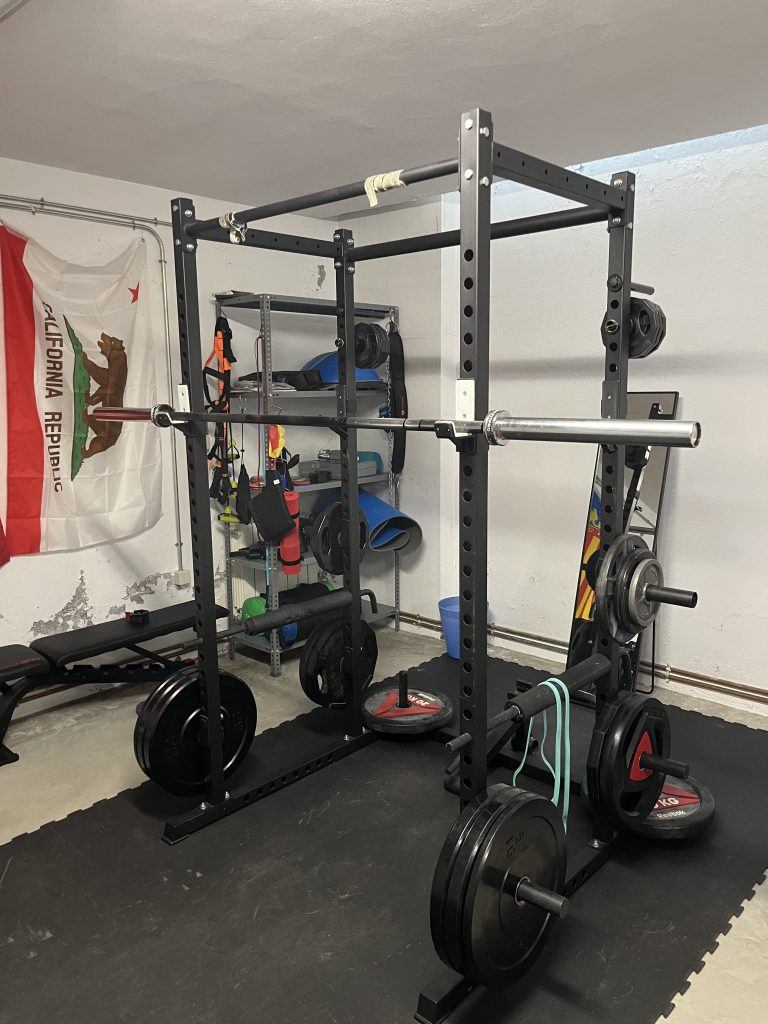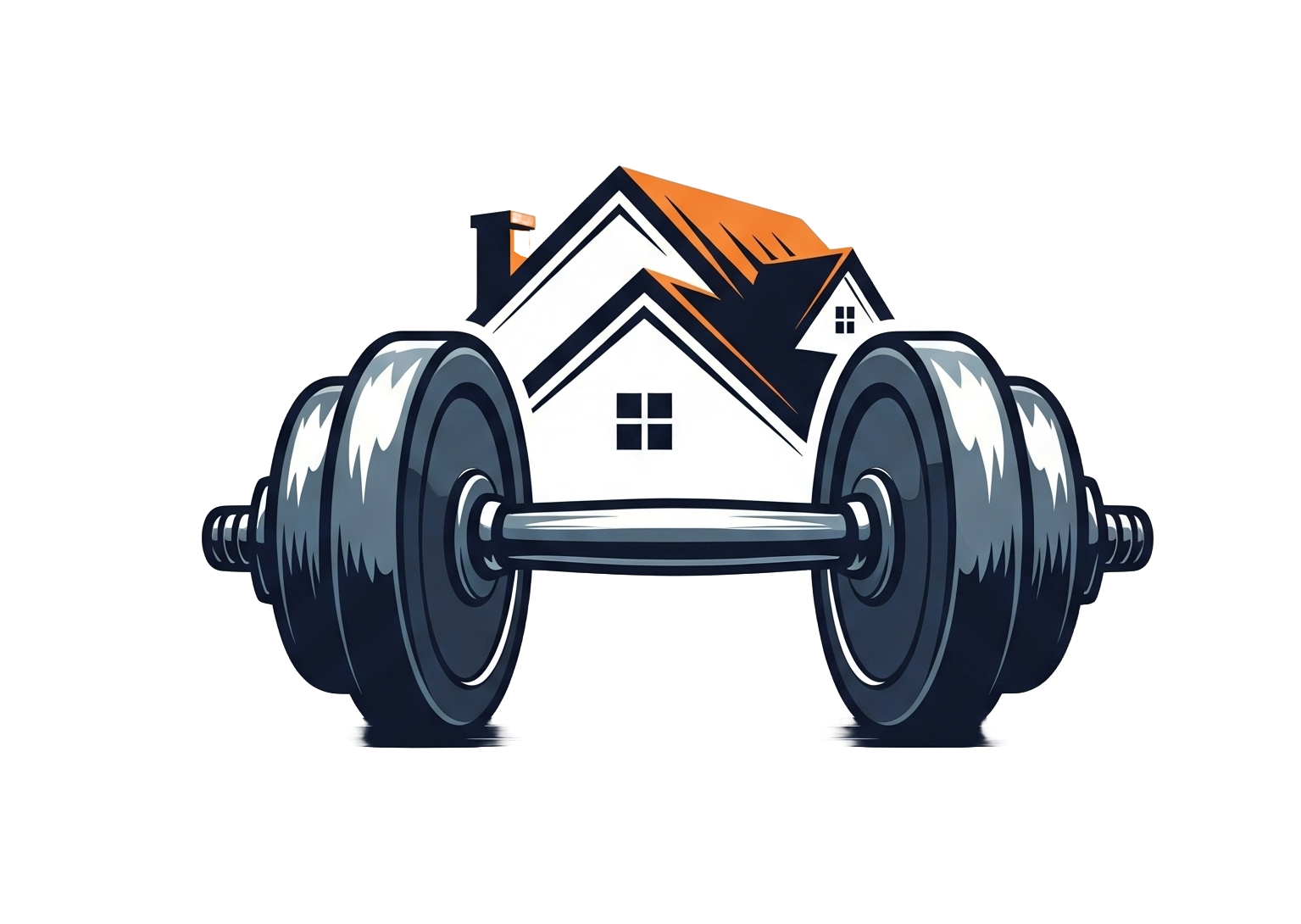The whole purpose of barbell training and having a squat rack is progressive overload. How do you achieve progressive overload? By loading up weight plates. A seemingly standard and almost commoditized item also has – yup, you guessed it – a surprising amount of complexity behind it. Bumpers vs cast-iron; rubber or urethane-coated; competition plates; change plates, etc. I’ve used every kind of weight plate available, and bought almost every kind too, and I’m giving you this weight plate buyer guide to navigate this landscape.
The very first dividing line is a simple question: “Will you be dropping your weights?” Your answer to this determines which of the two main families of plates you should focus on.
Bumper Plates: If you perform Olympic lifts (like the snatch or clean and jerk), or if you don’t want to control the eccentric portion of your deadlifts, then you will need bumper plates. They are made of dense rubber and are specifically designed to be safely dropped without damaging the plates, your barbell, your floor, or yourself.

Cast Iron Plates: If you are focusing on the “slow lifts” (squat, bench press, overhead press) and have good control over your deadlifts, then you can save a lot of money with classic cast iron plates. They are durable and take up less space on the bar, but they cannot be safely dropped.
Either way, in this weight plate buyer guide, I don’t advocate competition plates or plates with exotic rubber composition. If you’re competing, you’ll need them, and you aren’t going to be reading this guide. If you’re reading this guide, you’re probably not competing in Olympic weightlifting, so there is no reason for you to overpay. Unless, of course, you have cash to spare and you simply like the way they look and feel.
Size does matter
Now, let’s talk about the key physical difference between them: diameter. The IWF standard for bumper plates is 450mm (about 17.7 inches). All quality bumper plates, from 10lbs to 45lbs, will have this same diameter. Iron plates, however, get smaller as they get lighter.
This brings us to a pro-tip for those who want a mixed setup. I personally have a mixed line-up in my home gyms, as bumpers tend to have a higher $/lb cost than iron plates. If you go this path, you must ensure that your bumper plates are always taking the initial impact. For example, if you put a 45lb bumper on the bar first and then add smaller 25lb iron plates, only the bumper will touch the ground. This is fine, but you must ensure the total weight of the bumpers is equal to or greater than the iron plates to avoid putting undue stress on your barbell.
Show me the money: how not to blow the budget
Having said that, regardless of bumper or iron, the three core drivers you’re looking out for are: “true” cost ($/lb), accuracy (does it weigh what it says it weighs?), and overall shape and size.
Any weight plate buyer guide will talk about money – and how to spend it wisely. I look at 45lb plates to set the standard floor for $/lb prices, and then I know that they’ll only go up. $2/lb is an excellent price for simple black bumpers or cast iron plates, but up to $2.5 is still a decent price. At $3/lb, you’re either going to demand a premium in quality, or you’re better off still hunting for another vendor. Once you get down to 10lb plates, you could easily be looking at $4 to $6 a pound even on the lower end of the spectrum.
This means you want to buy in bulk. You’re solving for the best blended $ price per pound, and, provided you’re strong enough, you want those lbs to come in the form of larger plates rather than smaller. 250lb weight sets (two pairs of 45’s, a pair of 25’s, and a pair of 10’s) could be found for $550 to $600, which represents a competitive blended price, and allows a beginner room to grow.
That said, when it comes to budget optimizing, if your local Facebook Marketplace has a vibrant home gym scene, buying used is probably the smartest choice.
Accuracy & Tolerance: Does it Weigh What it Says?
Simply put, shoddy manufacturers don’t respect the actual weight. A 45lb plate could weigh 47lbs or 43lbs. This is where, in general, brand and higher cost are the signals that accuracy will be higher. Personally, almost all of my plates are unbranded, so that’s how my wallet voted. On this front, buyer beware. I have a pair of Reebok-branded 45lbs and a pair of Ziva urethane plates, and they definitely “feel” higher quality than the generics, but I haven’t gone and weighed each and every plate. That said, most of my generics are either black bumpers or rubber-coated plates. My cast iron plates are mostly rounding out my set.

A note on shape: plates are either round, or octagonal. The main difference is whether you plan on lifting from the floor (ie. deadlifts or Olympic lifts). If so, it behooves you to choose round plates. If you’re lifting off the rack (squats, bench press, shoulder press, etc) then it makes no difference either way.
Pro-Tip: Understanding “Made in USA” and Plate Sourcing
A lot of consumers are looking for “Made in USA” plates. For a few vendors, “Made in USA” is part of their brand identity; if a vendor isn’t making that point loud and clear, safe to say their are mainly sourcing from China. However, when it comes to black bumper plates, the vast majority, even those from “Made in USA”-type vendors, come from China. Something to keep in mind when shopping around. Special plates – hi-temp, competition, colored, etc – will either come from the USA or China, but the entry-level black bumpers almost always come from China, regardless of vendor.
How Many Plates Should You Buy? A Practical Guide
Weight plates are where a home gym budget can quickly get out of control. Your goal is to buy enough weight to consistently challenge yourself through progressive overload, without overspending.
- The Ideal Starting Point: A 250lb Set. Most reputable vendors will allow you to build or buy a starter set of around 250lbs. A great combination is two pairs of 45s, a pair of 25s, and a pair of 10s. For most people, this is a perfect, cost-effective way to start, providing plenty of room to grow while focusing on the most valuable plates.
- Adjusting Upward: If you’re already quite strong, you’ll simply need more 45lb plates. Don’t buy more sets; just add pairs of 45s, as they offer the best cost per pound.
- Adjusting Downward: If you don’t plan on lifting heavy, you can build a set à la carte. However, I strongly recommend that every lifter own at least one pair of 5lb and 2.5lb plates. These “change plates” are essential for making small, consistent jumps in weight, which is the key to long-term progress.
- A Note on 35lb Plates: For most home gym owners, 35lb plates are a luxury, not a necessity. They are common in commercial gyms for convenience, but you can achieve the same weight combinations with your 25s and 10s.
Excited to shop for actual weight plates?
Buying weight plates doesn’t have to be complex. It boils down to a few key priorities:
- Choose Your Style: Decide if your lifting style (dropping weights) justifies the higher cost of bumper plates, or if durable, space-saving cast iron is right for you.
- Buy for Value: Optimize your blended cost-per-pound by buying in sets and checking the used market.
- Prioritize the Basics: Don’t get distracted by exotic plates. A standard, reasonably accurate set of iron or bumper plates is all you will ever need to get incredibly strong.
Know what you want? Check out our Weight Plate gallery, to find the right option for you.
Now that you’ve read the weight plate buyer guide, see how it all comes together in our Ultimate Starter Home Gym Guide.
